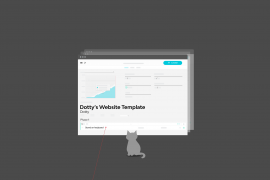The London Design Festival held last week had lots of interesting talks and exhibitions going on all around the city. One of the panels I attended was Co-Design and Collaboration, the panelists brought great insight on the subject, and its influence, all from very different perspectives.
But what is co-design and collaboration? While there’s no official definition in the dictionary, it is essentially the concept of sharing the design idea, creation and process and collaborating with others to obtain greater results.

If you’ve always wondered about the impact a co-designed environment can have then these interesting findings may interest you:
1. Speed
Unilever did some great research into Water and Sanitation for the Urban Poor and initially spent nine months trying to find ways to solve this issue. When they joined forces with a collaborative consultancy they hit the ground running and found a solution in less than a month! The power of an inspired community in this case, allowed for great concepts to be brought to the table and a much faster resolution.
2. Deeper consumer engagement
Understanding your audience will always allow you to build a better product. The “affinity pyramid” described by Cecilia Weckström from Lego is a useful technique to better understand your user base and draw deeper consumer engagement.

Cecilia said that the user level at the top of the pyramid is the most engaged of all users. These are the ones that would share their thoughts with the community and are extremely knowlegable about the product.
However looking at the base level users they found great insights too. As an example, they would ask kids to draw something. Instead of analysing the drawing itself, they would ask them why they came up with their ideas, thereby drilling further into the core insights of the product. Smart huh?
3. Increased Profitability
Another great example of a co-designed environment resulting in a greater product experience was provided by Nathan Waterhouse at OpenIDEO when he spoke about the Global Airline app.
This app was designed to understand passengers needs, improve service onboard and get quick feedback from staff about new initiatives being tested.
A total of 6000 staff members were engaged in the app and the results were surprising at times. For example, they asked cabin crew for input on meal selection. The results increased customer satisfaction with meal choices by 7%. Other benefits were an increase in staff satisfaction, as a result of working in an environment where they felt their voices were being heard. There was also an overall increase in profitability due to the reduced waste of food.
There is a lot of food for thought (no pun intended) on how to make changes to your business to enable a co-designed and collaborative space and even to change attitudes. I hope this inspiring way of working has sparked ideas that you might be able to apply and benefit from in your own companies.






